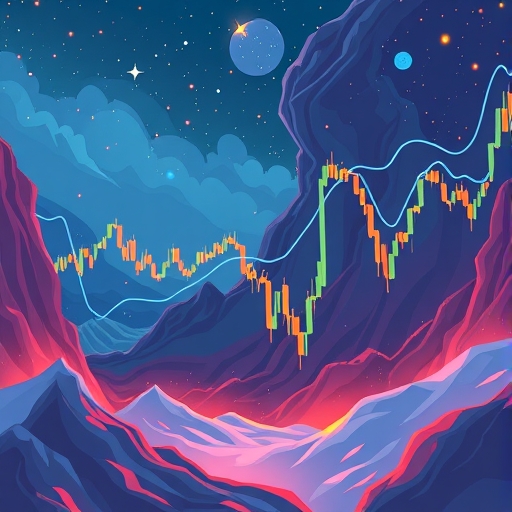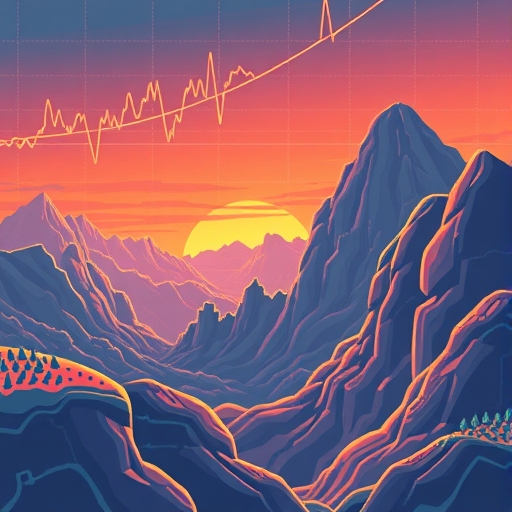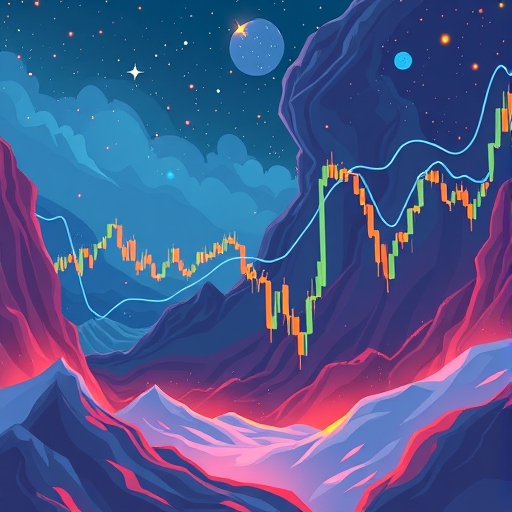Decoding Wall Street’s Fear Gauge: A Comprehensive Guide to the VIX and Its Futures Curve
In the dynamic world of financial markets, volatility serves as a critical barometer of investor sentiment, often dictating the ebb and flow of asset prices. At the heart of this measurement lies the Cboe Volatility Index, or VIX, famously dubbed Wall Street’s “fear gauge.” While the VIX provides a real-time snapshot of immediate market anxiety, a deeper dive into its futures curve offers invaluable insights into the market’s forward-looking expectations for turbulence.
This article will unravel the complexities of the VIX, explore the crucial states of its futures curve—contango and backwardation—and equip you with the knowledge to interpret these signals for more informed trading and risk management decisions. We will also look at the instruments used to trade volatility and examine how historical events have shaped market sentiment, providing a practical guide for navigating the financial landscape.
The VIX Explained: More Than Just a Number
What exactly is the VIX, and why is it so important to investors? The Cboe Volatility Index (VIX) is a widely recognized market index that measures the market’s expectation of near-term, 30-day volatility in U.S. stocks, specifically the S&P 500. It’s calculated using the prices of S&P 500 index options, considering both call and put options across a range of strike prices. Essentially, it reflects how much investors are willing to pay for protection against large market swings, much like an insurance premium for your portfolio.
When the market experiences turmoil, such as an unexpected economic shock or geopolitical event, investor demand for protective put options on the S&P 500 tends to spike. This increased demand drives up option prices, which in turn causes the VIX to surge dramatically. Conversely, during calm periods, when markets are stable or rising, the demand for these protective options diminishes, and the VIX typically remains low. Historically, the VIX is known to be mean-reverting, meaning it tends to return to a base value, often settling between 10-15 after periods of elevated activity. So, while it can spike, it rarely stays high for long.
Understanding the VIX’s characteristics is crucial for investors:
- It provides a real-time measure of market sentiment and perceived risk.
- Its inverse correlation with the S&P 500 makes it a key indicator during market downturns.
- The VIX’s mean-reverting nature suggests that extreme spikes are typically followed by a return to lower levels.
The VIX Futures Curve: A Window into Future Volatility
While the VIX index tells us about current 30-day expected volatility, the VIX futures curve offers a forward-looking perspective, illustrating how the market anticipates volatility will evolve over future months. VIX futures are financial instruments that allow traders to lock in an expectation of the VIX’s value at a specific future date, distinct from the spot VIX index itself, which is not directly tradable. 
The VIX futures curve is simply a plot of VIX futures prices across various expiration dates. Understanding its shape is key to discerning market sentiment:
- Contango (Normal Curve): This is the most common state, characterized by an upward-sloping curve. In contango, near-term VIX futures trade at lower prices than longer-dated futures. This indicates that traders expect volatility to revert towards a higher long-run average. Think of it like a staircase going up: each step (future month) is slightly higher than the last. This state creates a “roll yield” that can be beneficial for those taking “short volatility” positions, as the near-term futures tend to converge downwards towards the spot VIX as they approach expiration.
- Backwardation (Inverted Curve): This is a rarer and more significant condition, where the curve is downward-sloping. Here, near-term VIX futures are more expensive than longer-term futures. This inversion signals acute, immediate market stress and high near-term fear. It means that market participants anticipate more risk right now than in the coming months. Backwardation is typically short-lived, often lasting days or weeks, and frequently coincides with market bottoms during corrections. However, it can recur in prolonged bear markets, signaling persistent underlying anxiety.
To help visualize these two states, consider the following comparison:
| Feature | Contango (Normal Curve) | Backwardation (Inverted Curve) |
|---|---|---|
| Curve Shape | Upward-sloping | Downward-sloping |
| Near-term Futures Price | Lower than longer-term | Higher than longer-term |
| Market Expectation | Volatility reverts to higher long-run average | Acute, immediate market stress and high fear |
| Frequency | Common state | Rare, typically short-lived |
| Market Signal | Normal or calm conditions | Significant market turmoil, potential market bottom |
Understanding Volatility Instruments: Trading the Untradeable
It’s crucial to remember that the VIX itself is an index—a number—and cannot be directly bought or sold. Instead, investors and traders gain exposure to volatility expectations through its derivatives, primarily VIX futures and VIX options, as well as exchange-traded products like ETNs.
VIX Futures: These are cash-settled contracts based on the VIX’s value at expiration. They are generally considered a more straightforward way to trade volatility expectations compared to options. Why? Their mechanics are simpler, the outcomes are less extreme, and they typically have narrower bid-ask spreads, making them more accessible and requiring less precise timing than options for a directional bet on volatility. 
VIX Options: Trading options on the VIX is a more complex endeavor. These options are characterized by extremely high implied volatility—often 70-80% when the VIX itself is around 21—making them inherently expensive. Profiting from VIX options requires very precise timing due to their rapid time decay and sensitivity to changes in volatility. Their pricing incorporates the VIX’s mean-reverting nature, and they exhibit unique “Greeks” (like delta, gamma, theta, and vega) and a steep call skew. The steep call skew, for example, reflects the institutional demand for hedging against sharp, sudden upward spikes in the VIX.
VXX (iPath S&P 500 VIX Short-Term Futures ETN): The iPath S&P 500 VIX Short-Term Futures ETN (VXX) is a popular exchange-traded note designed to track the S&P 500 VIX Short-Term Futures Index. VXX holds a portfolio of the front two-month VIX futures and constantly “rolls” them over to maintain an average 30-day expiration. However, due to the persistent contango in the VIX futures curve, VXX is prone to significant value decay over time. This makes it generally unsuitable for long-term holding and is often referred to as a “decaying asset.” If you’re considering VXX, it’s vital to understand this inherent structural drag.
To further clarify the instruments discussed, here is a summary of their key attributes:
| Instrument | Directly Tradable? | Primary Use | Key Characteristic |
|---|---|---|---|
| VIX Index | No (an index) | Market sentiment gauge | Real-time 30-day volatility expectation |
| VIX Futures | Yes | Speculation/Hedging future volatility | Cash-settled, based on future VIX value |
| VIX Options | Yes | Precise volatility bets/Hedging | High implied volatility, rapid time decay |
| VXX ETN | Yes | Short-term volatility exposure | Tracks front-month VIX futures, prone to decay in contango |
When Fear Takes Over: Historical VIX Spikes and Backwardation
The relationship between the VIX and the S&P 500 is typically inverse: the VIX tends to rise when the S&P 500 falls (often driven by increased demand for portfolio protection via puts) and generally falls when the S&P 500 rises and stabilizes. This dynamic makes the VIX a powerful indicator of market health and investor confidence.
Historical events provide compelling evidence of how quickly market sentiment, and thus the VIX, can shift. Consider the 2018 Tariff Fears as a telling case study. In March 2018, U.S. President Donald Trump’s announcements of new tariffs on steel and aluminum sparked widespread fears of a global trade war. This sudden policy decision caused the VIX to spike sharply, reflecting immediate market anxiety. Crucially, the VIX futures curve inverted into backwardation, signaling that traders anticipated significant near-term risk. While the fear was acute, the volatility often subsides relatively quickly if worst-case scenarios don’t fully materialize, demonstrating the transient nature of many event-driven spikes.
This wasn’t an isolated incident. VIX backwardation has historically coincided with other major market stress events:
- The 2008 Financial Crisis, which saw unprecedented market fear.
- The 2011 U.S. debt downgrade, creating uncertainty around sovereign credit.
- The 2015 China scare, tied to concerns about global economic growth.
- The March 2020 COVID crash, a sudden and severe downturn due to the global pandemic.
In each of these instances, the VIX served as a clear indicator of heightened fear, with the futures curve often flipping into backwardation to reflect the immediate and intense market stress.
These significant events highlight how the VIX and its futures curve react to major market disruptions:
| Event | Year | Market Impact | VIX Curve Reaction |
|---|---|---|---|
| 2008 Financial Crisis | 2008 | Severe market downturn, credit crunch | Extreme VIX spike, prolonged backwardation |
| U.S. Debt Downgrade | 2011 | Sovereign credit uncertainty | Sharp VIX spike, brief backwardation |
| China Scare | 2015 | Global growth concerns | Significant VIX spike, brief backwardation |
| March 2020 COVID Crash | 2020 | Sudden global pandemic shock | Record VIX spike, immediate backwardation |
Strategic Volatility Trading: Navigating the VIX Curve
Understanding the VIX and its futures curve can inform various trading strategies and risk management approaches. The VIX’s inherent mean-reversion tendency forms the basis for many of these strategies. For example, after a sharp spike, the VIX usually retreats, offering opportunities for traders who anticipate this reversal.
Here are some strategic approaches based on the VIX futures curve:
- Sell VIX Futures in Contango: This is often a long-term profitable strategy (simulated by the CBOE SHORTVOL Index). When the curve is in contango, near-term futures are cheaper than longer-term ones. By selling these near-term futures and then “rolling” the position to the next month, traders can capture the roll-down yield as futures prices converge to the spot VIX. This effectively profits from the expectation that volatility will eventually return to its long-run average.

- Buy VIX Futures in Backwardation: This is an opportunistic strategy (simulated by the CBOE LONGVOL Index) to profit during periods of high fear and VIX spikes. When the curve is in backwardation, near-term futures are expensive, reflecting acute stress. Buying these futures can lead to significant gains if volatility continues to surge. However, this strategy requires precise timing, as backwardation is typically short-lived.

- Sell VIX Futures at or near VIX Peaks: Leveraging the VIX’s mean-reverting tendency, this strategy aims to profit as volatility subsides after a sharp increase.
- Buy VIX Futures at or near VIX Bottoms: This strategy anticipates a sharp rise in VIX from low levels, even if the curve remains in contango. It’s a bet on an upcoming market shock.
When considering these strategies, it’s essential to weigh their typical market conditions and potential outcomes:
| Strategy | Optimal Market Condition | Potential Outcome | Key Risk |
|---|---|---|---|
| Sell VIX Futures in Contango | Normal, upward-sloping curve | Consistent roll yield profit | Sudden market spike (backwardation) |
| Buy VIX Futures in Backwardation | Acute market stress, inverted curve | Significant gains during spikes | Rapid mean-reversion, timing difficulty |
| Sell VIX Futures at VIX Peaks | VIX at historically high levels | Profit from volatility decline | VIX remains elevated or spikes further |
| Buy VIX Futures at VIX Bottoms | VIX at historically low levels | Profit from upcoming market shock | VIX remains low for extended periods |
It’s also important to note the dynamic correlation between VIX futures and the VIX index itself. This correlation is high for near-term futures but virtually non-existent for long-term futures (125+ trading days out). This means that long-term VIX futures are not effective hedges against immediate market downturns, highlighting the complexity of using these instruments for long-term portfolio protection.
When the VIX curve inverts into backwardation, it demands a defensive investment posture. This is a critical signal to reassess your portfolio exposure, conduct stress tests, and consider implementing downside hedges to mitigate immediate market risks. Understanding these nuances can significantly enhance your ability to navigate periods of heightened uncertainty.
Conclusion
Mastering the intricacies of the VIX and its futures curve is paramount for navigating today’s volatile financial landscapes. The ability to discern between contango and backwardation, to learn from historical events like the 2018 trade tensions, and to apply strategic risk management principles derived from these indicators, empowers investors to move beyond reactive fear. While the world of volatility trading is complex, a well-informed and disciplined approach, grounded in a comprehensive understanding of these market signals, is indispensable for resilient and potentially profitable investment outcomes.
Frequently Asked Questions (FAQ)
Q: What is the primary difference between the VIX index and VIX futures?
A: The VIX index is a real-time, non-tradable measure of the market’s expectation of 30-day volatility in the S&P 500. VIX futures, on the other hand, are tradable financial instruments that allow investors to bet on or hedge against the VIX’s value at a specific future date, providing a forward-looking perspective on volatility expectations.
Q: Why is the VXX ETN generally not recommended for long-term holding?
A: The VXX ETN holds a portfolio of front-month VIX futures and constantly rolls them over. Due to the VIX futures curve being in contango (upward-sloping) most of the time, near-term futures are cheaper than longer-term ones. As near-term futures approach expiration, they tend to converge downwards towards the spot VIX, causing a “roll yield” loss for the VXX. This structural decay makes it generally unsuitable for long-term investment.
Q: What does it mean when the VIX futures curve is in backwardation, and what should investors do?
A: Backwardation occurs when near-term VIX futures are more expensive than longer-term futures, signaling acute, immediate market stress and high near-term fear. This is a rare condition that often coincides with significant market downturns or event-driven spikes in volatility. When backwardation is observed, it suggests a defensive investment posture is warranted, prompting investors to reassess portfolio exposure, consider stress tests, and implement downside hedges to mitigate immediate risks.
Disclaimer: This article is for informational and educational purposes only and should not be considered as financial advice. Investing in financial markets, especially derivatives like VIX futures and options, carries inherent risks, and you could lose money. Always conduct your own research or consult with a qualified financial professional before making any investment decisions.



No responses yet